𝐋𝐢𝐟𝐞 𝐅𝐢𝐧𝐝𝐬 𝐚 𝐖𝐚𝐲, 𝟮𝟬𝟮𝟱,
exhibiting at the Kleefeld Museum of Contemporary Art September 11th- December 11th.
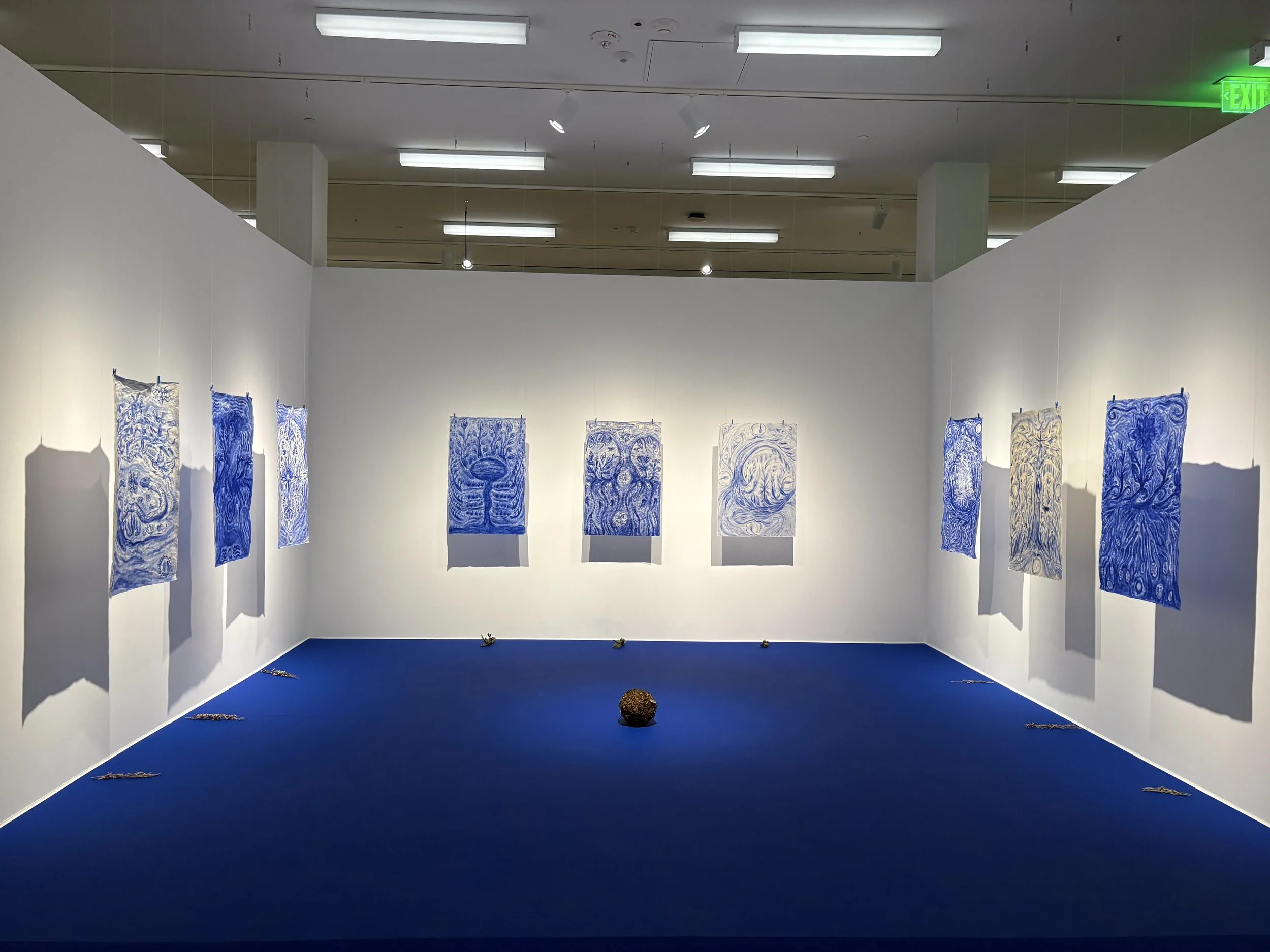
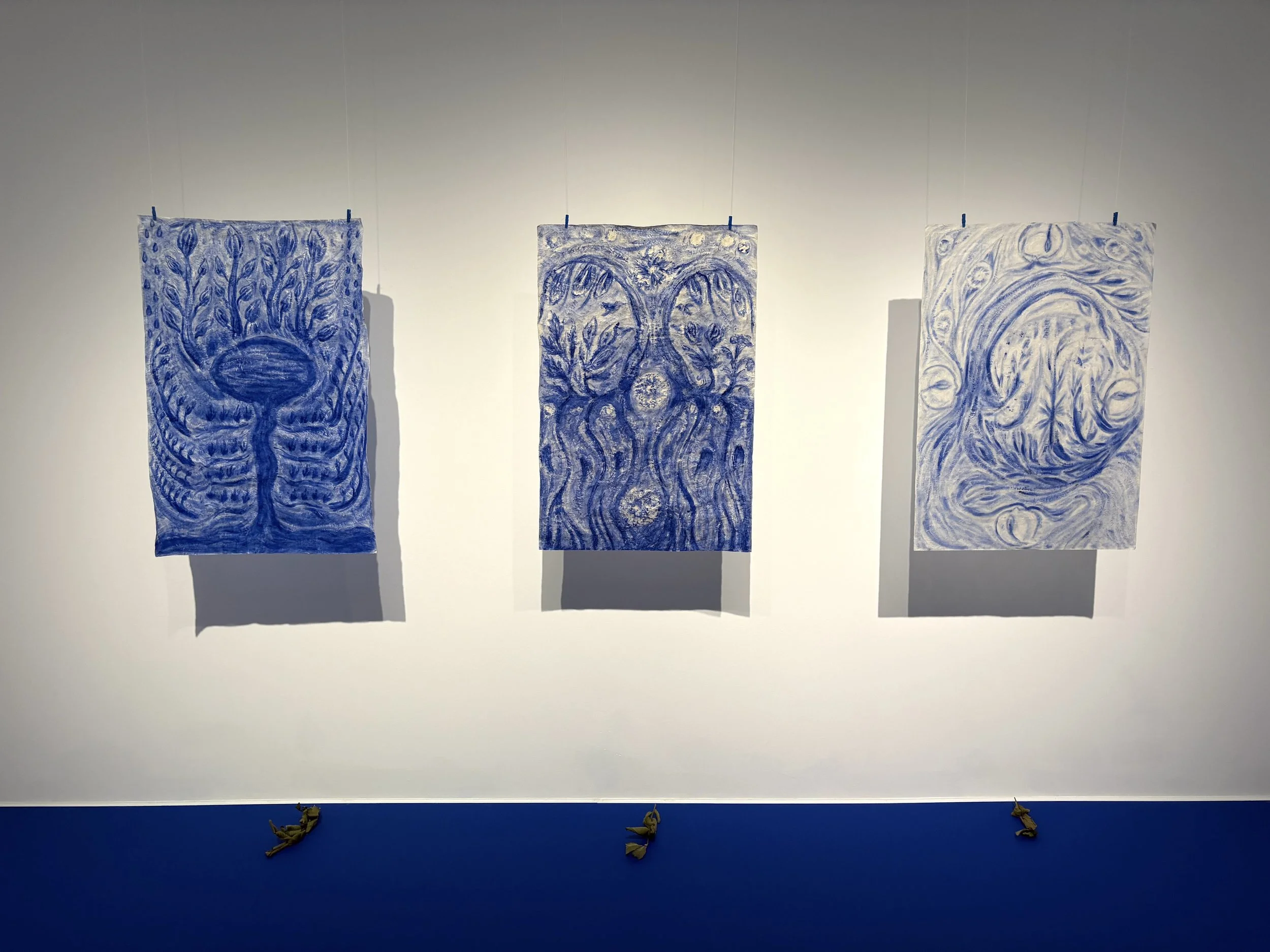
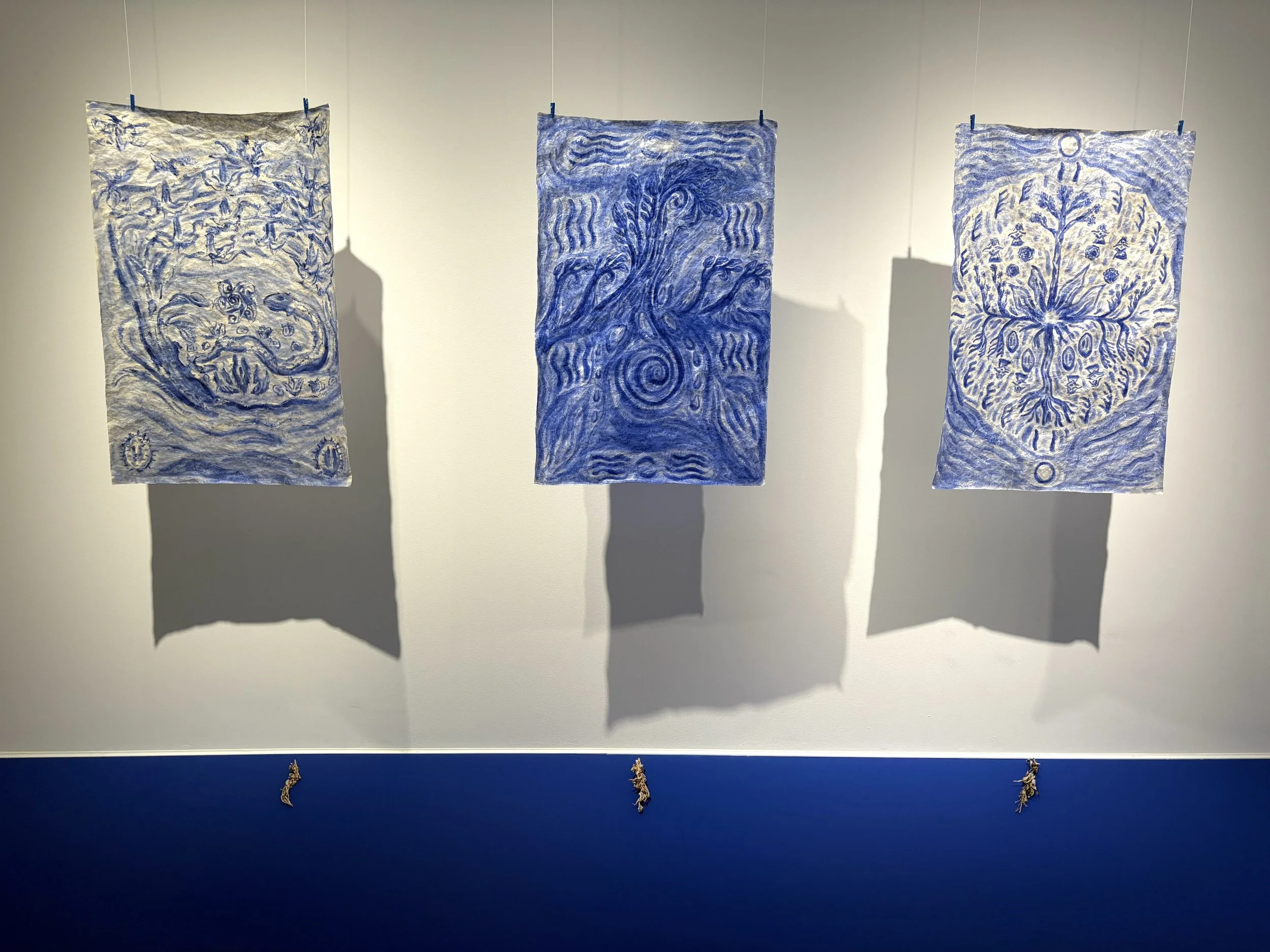
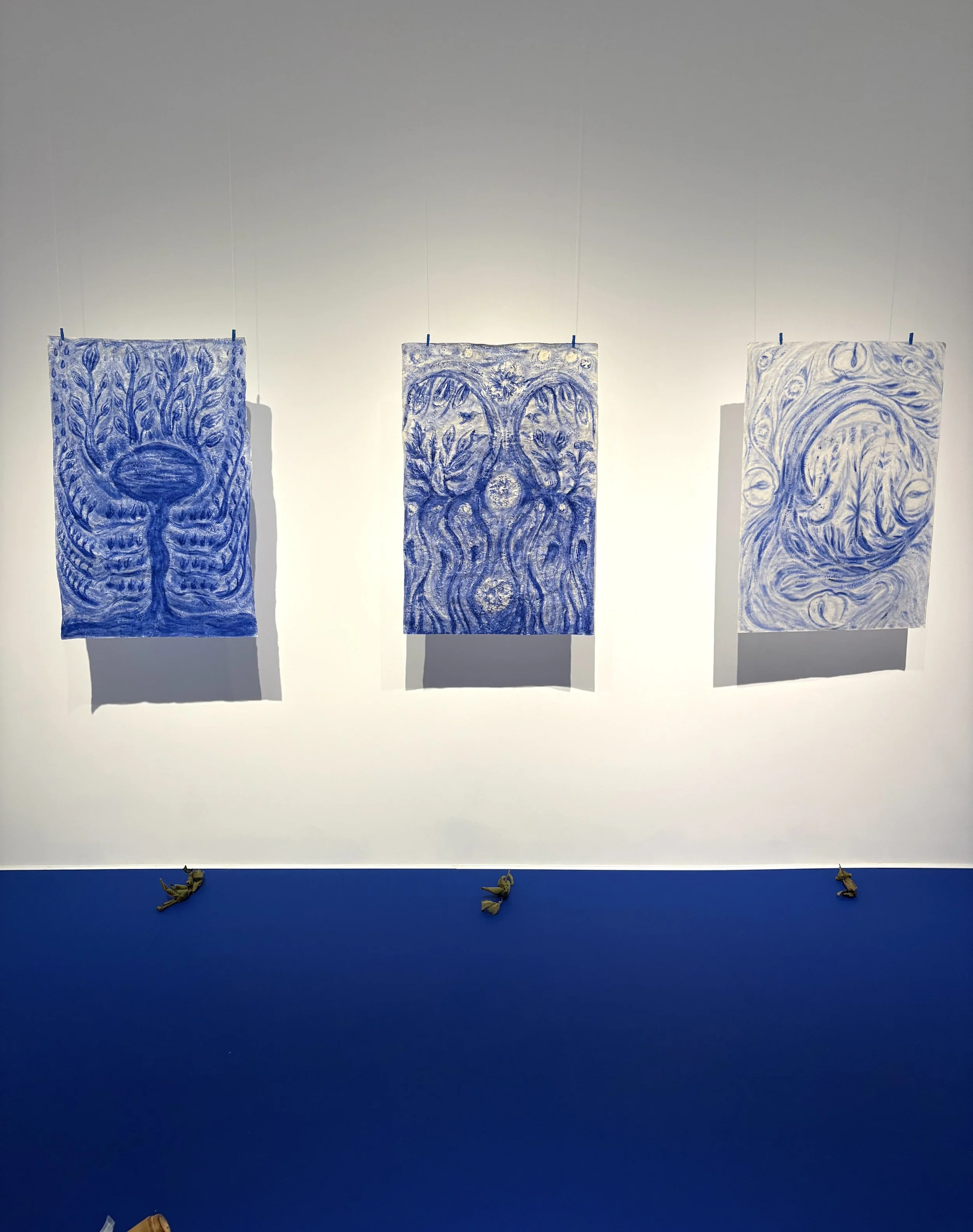
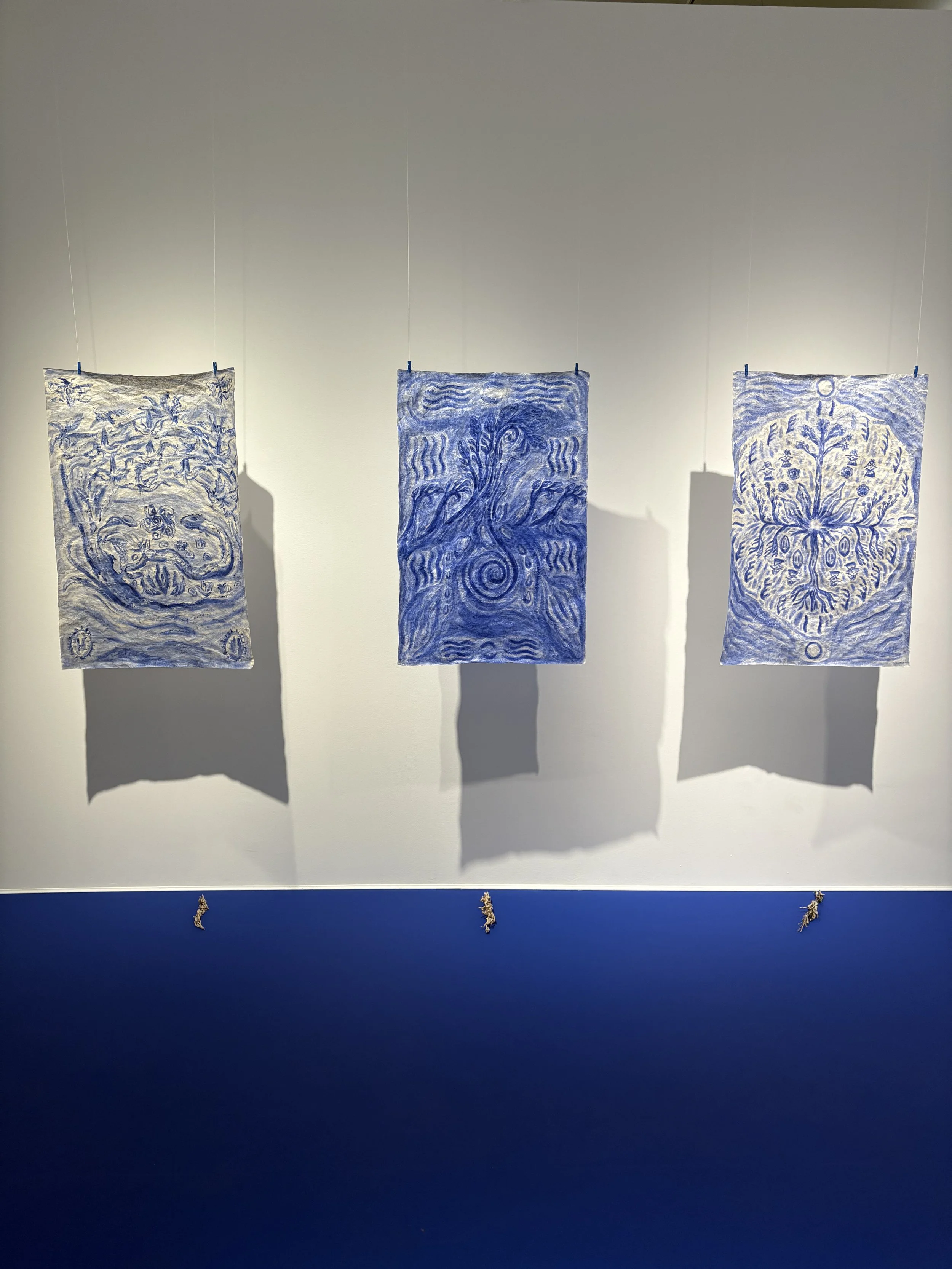
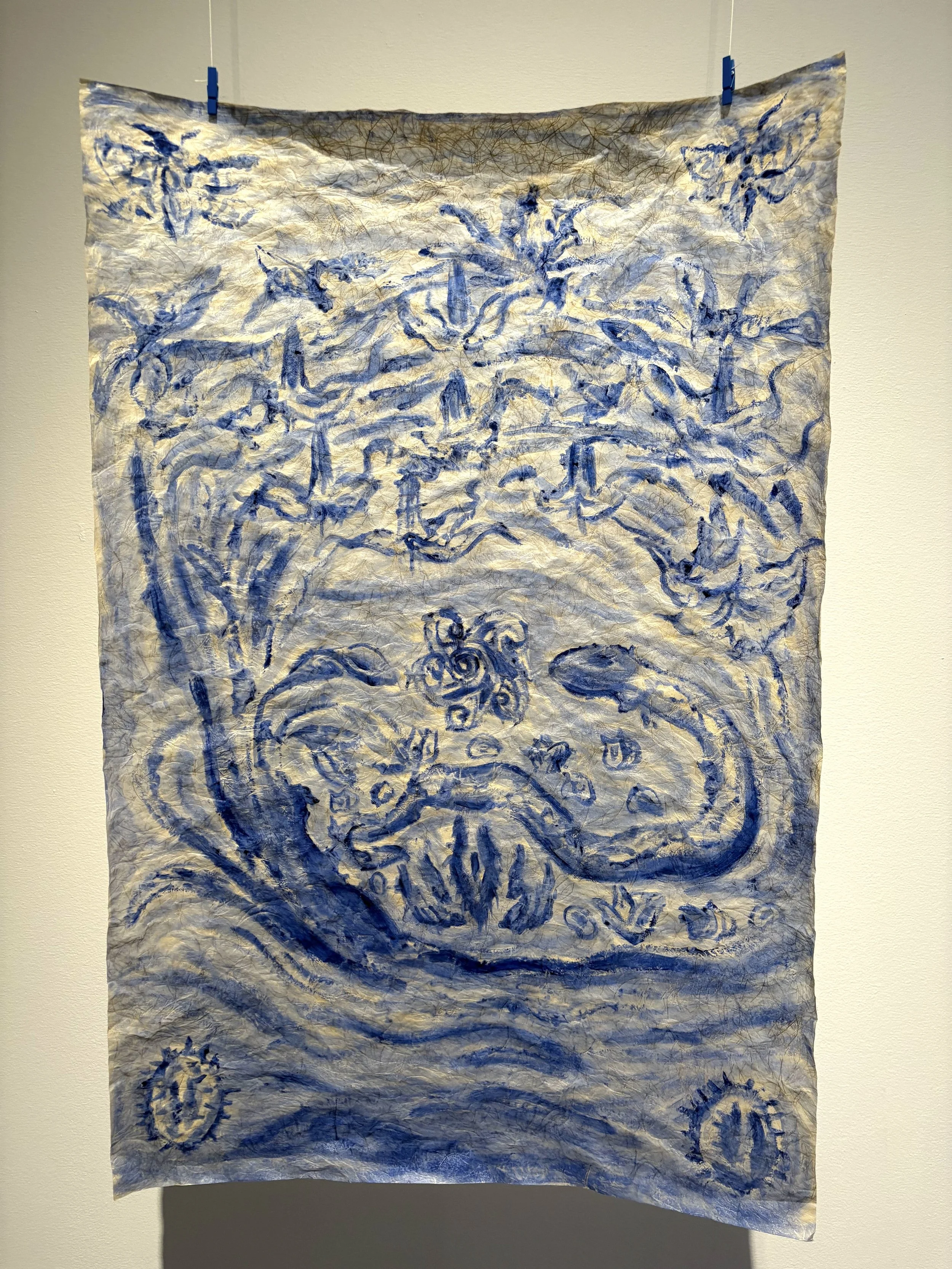
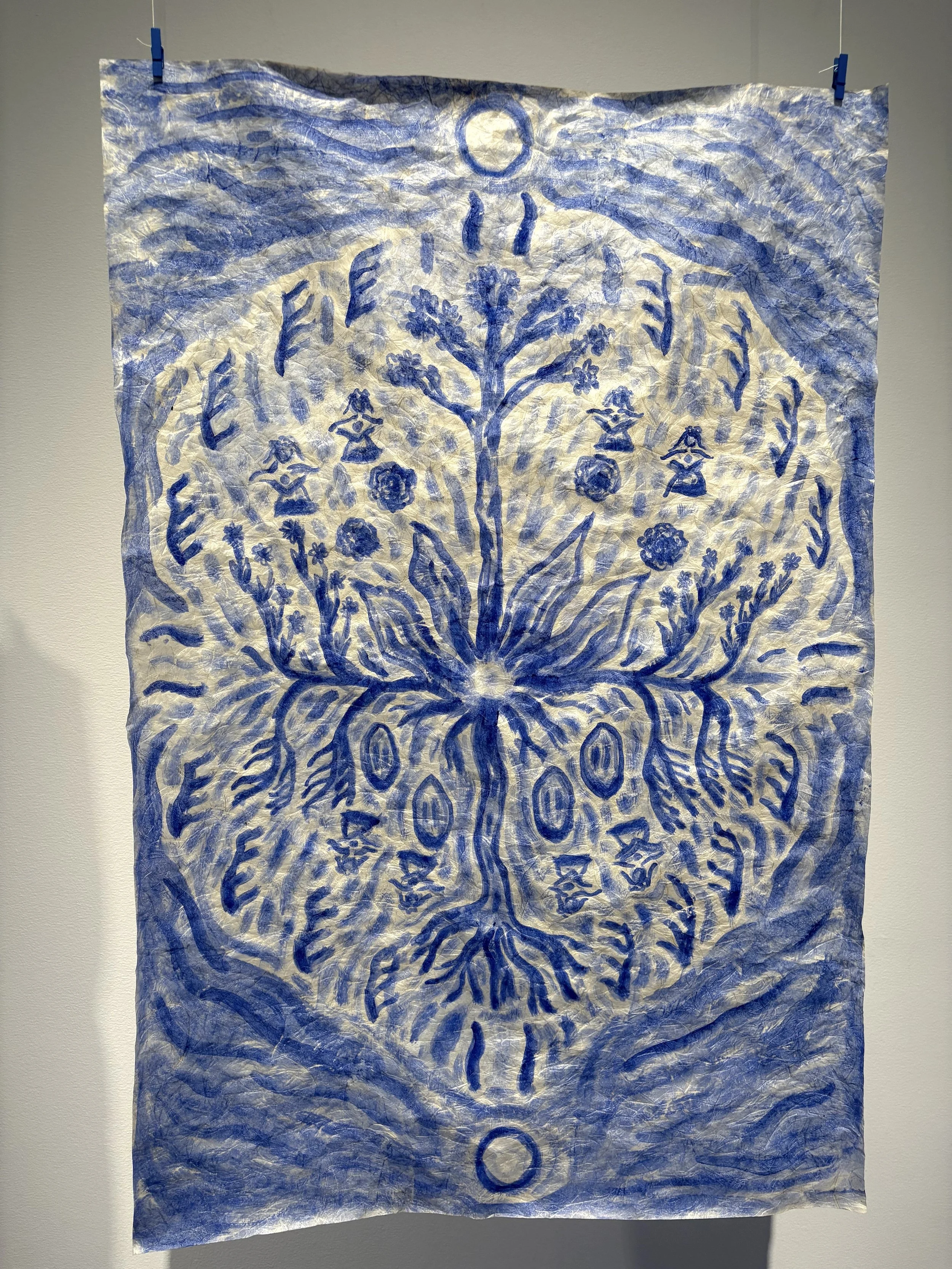
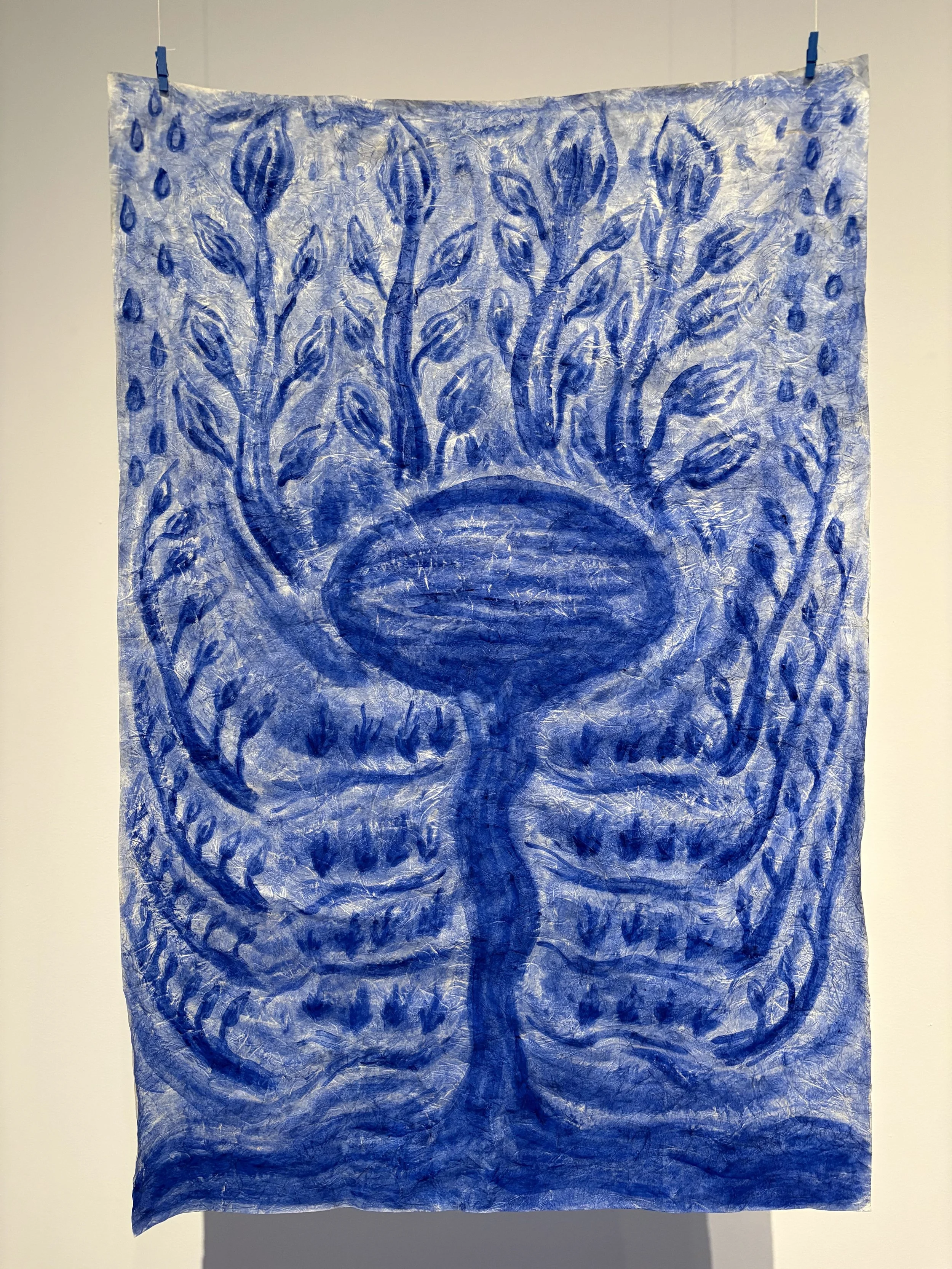
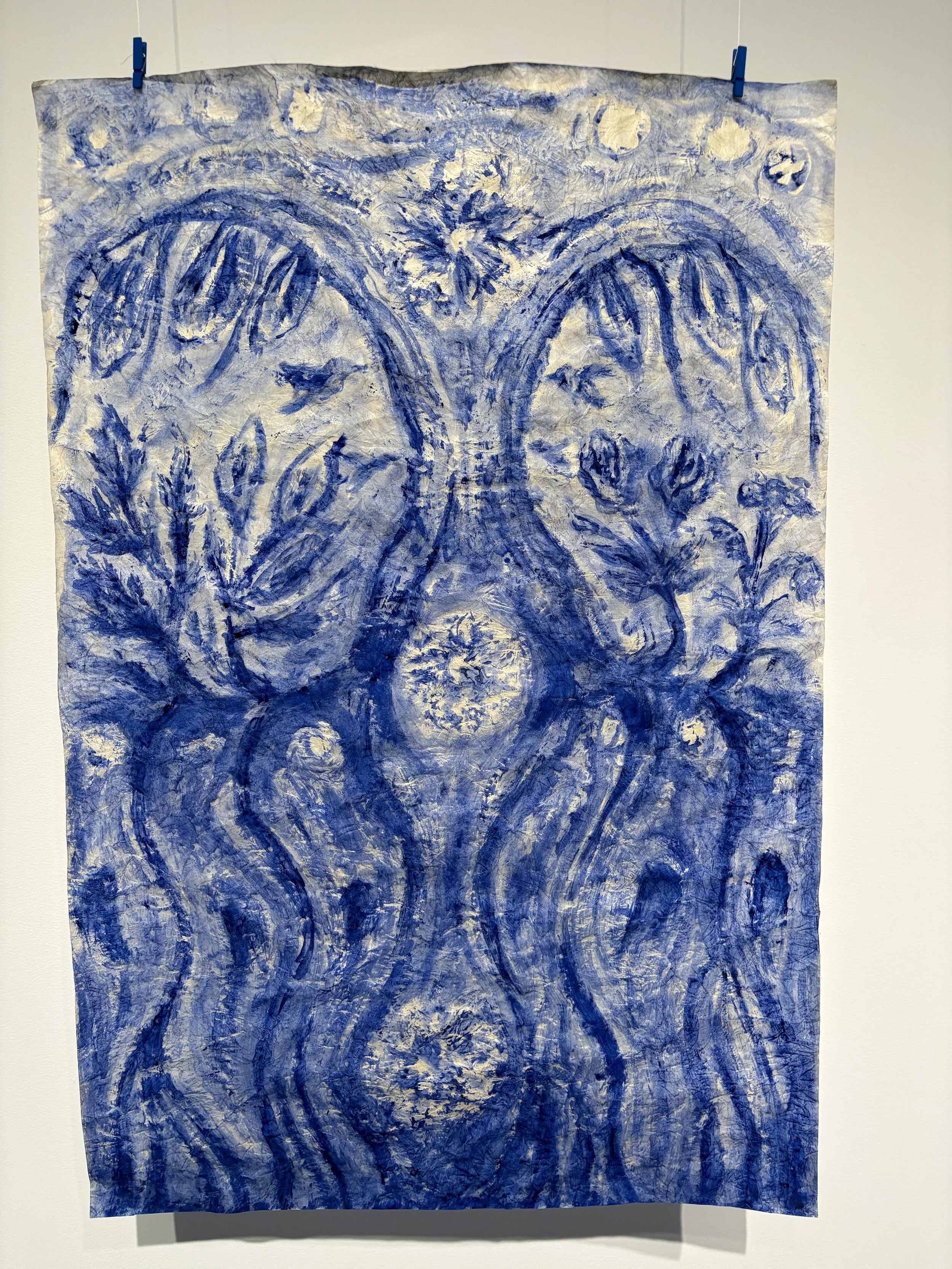
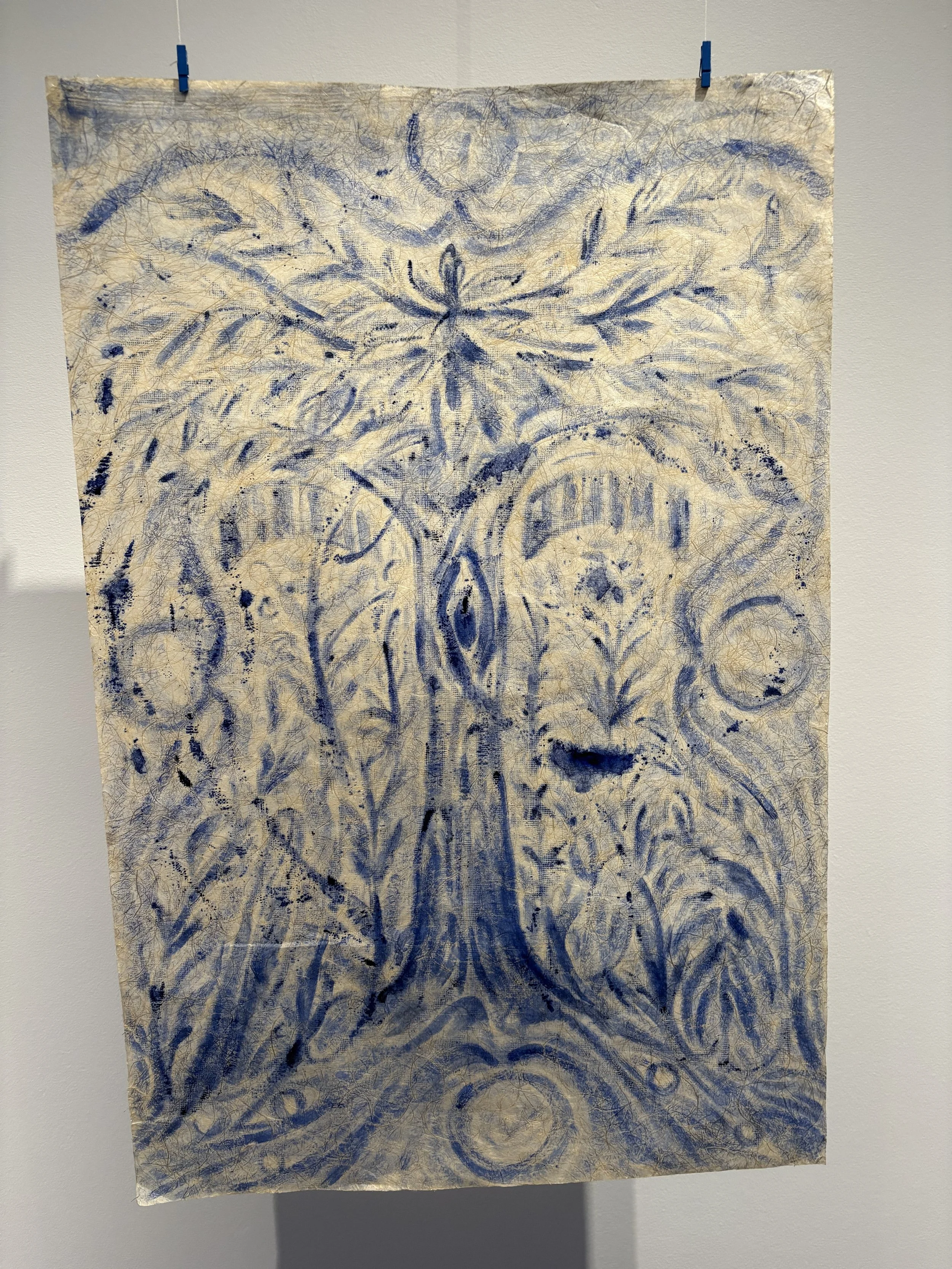
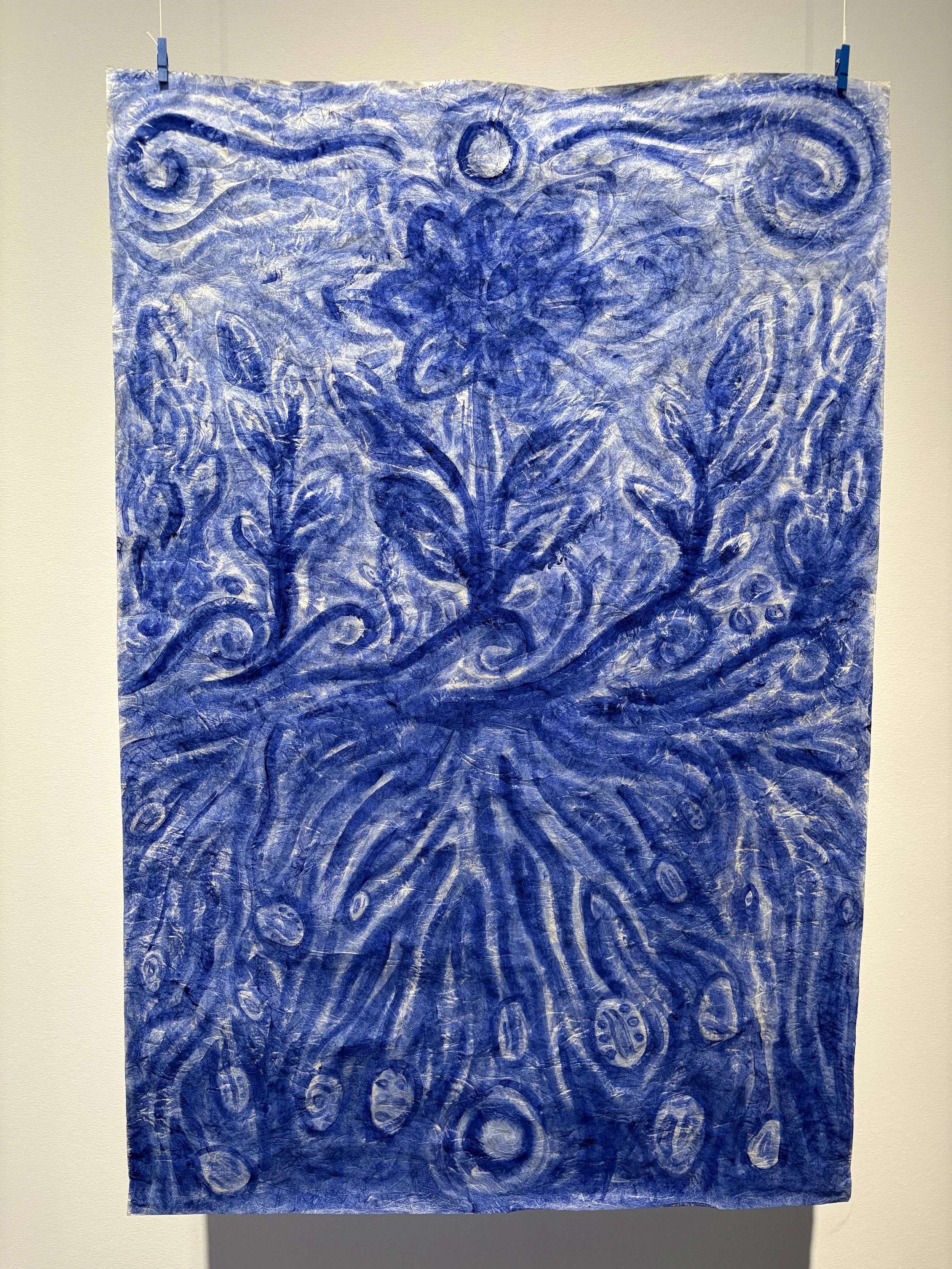
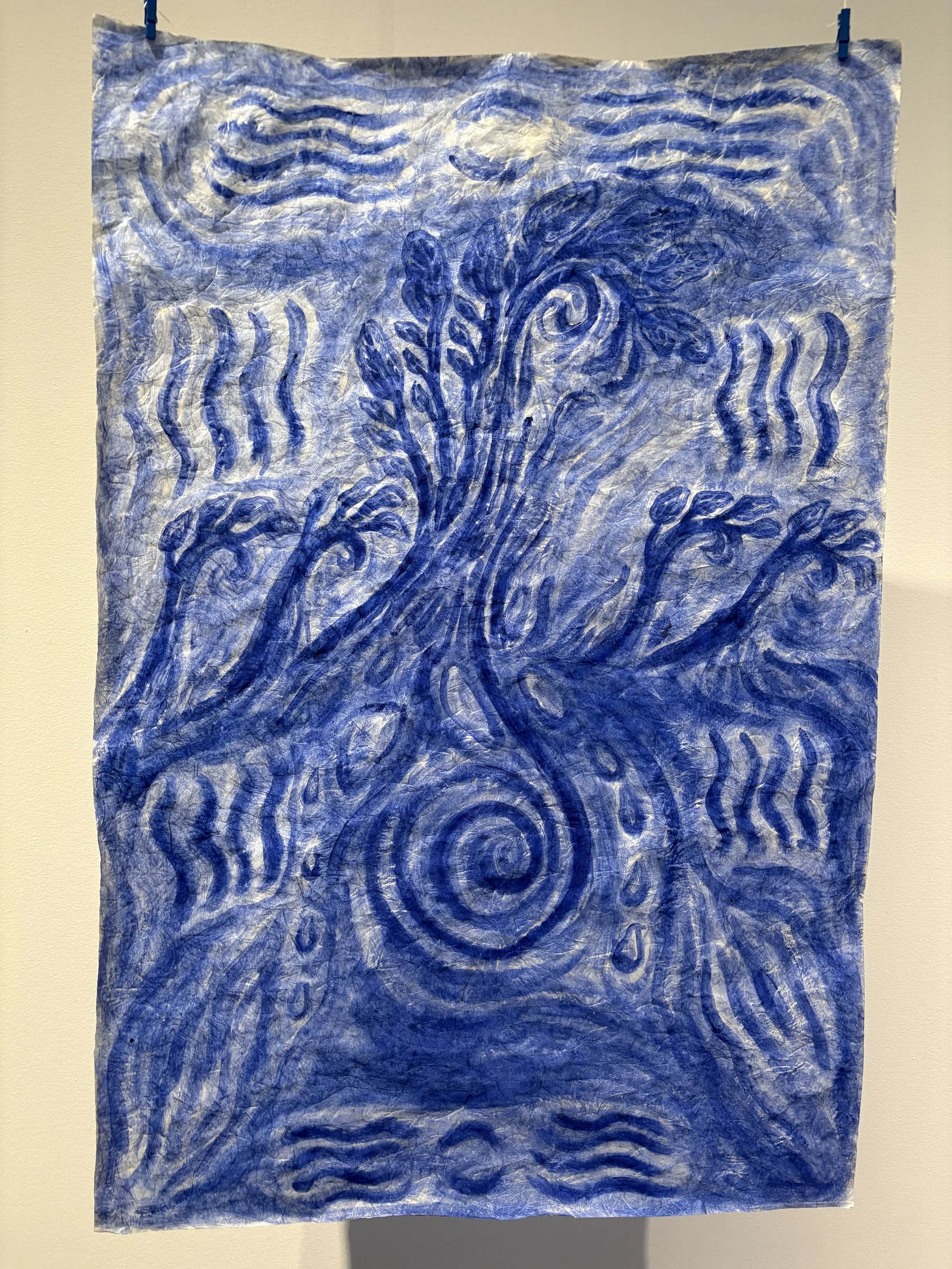
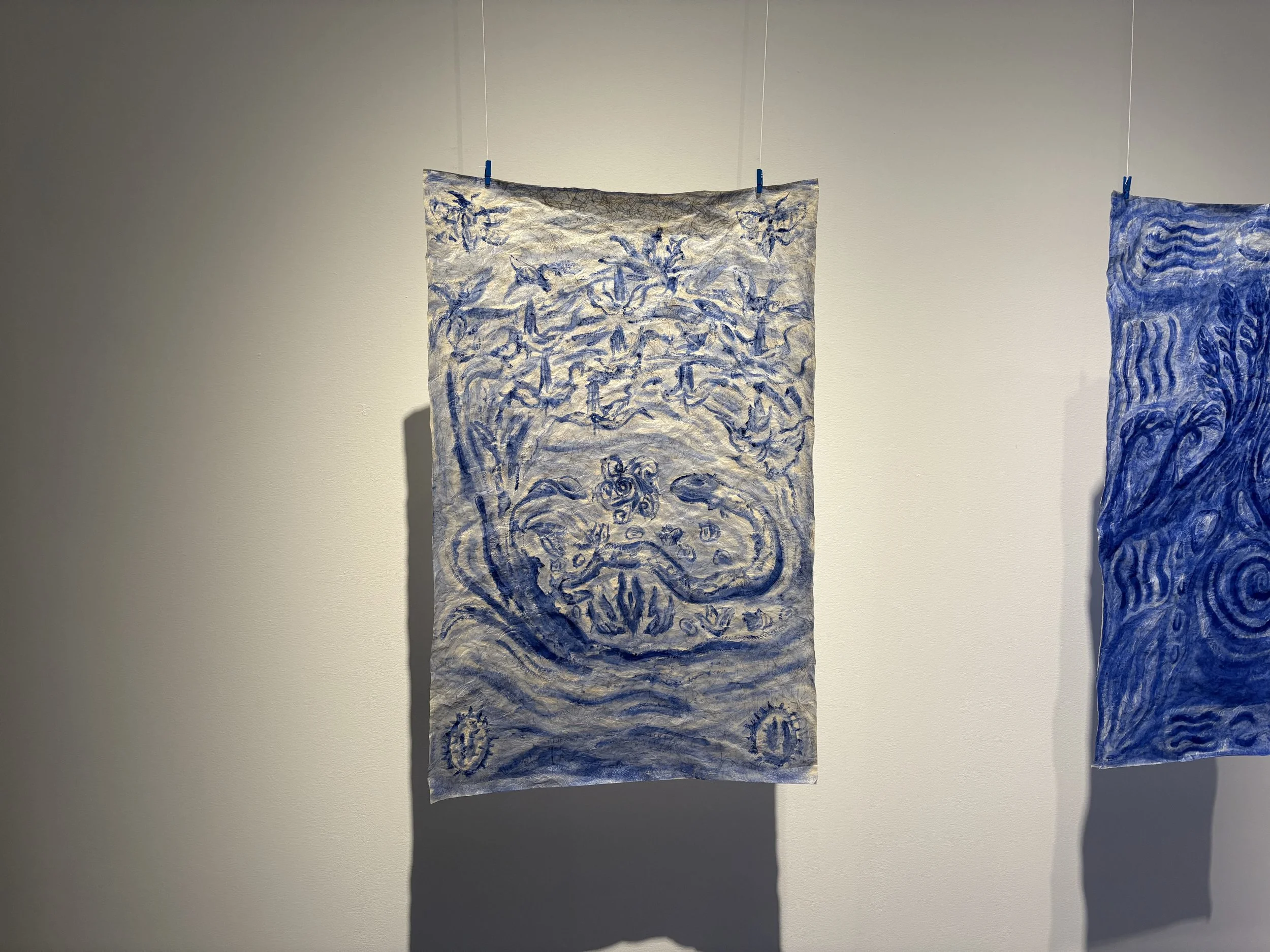
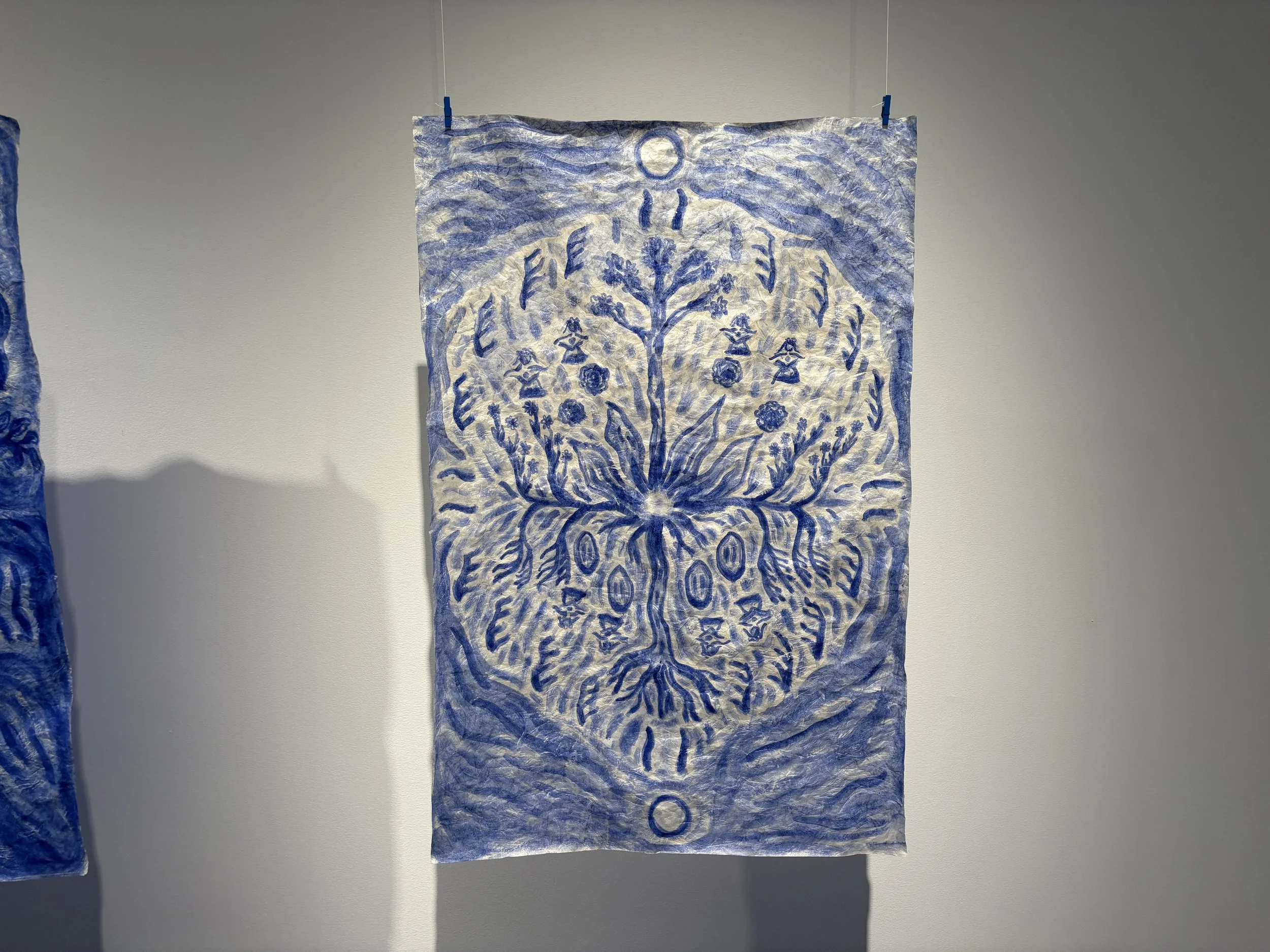
𝑶𝒊𝒍 𝒑𝒂𝒊𝒏𝒕 𝒉𝒂𝒏𝒅𝒎𝒂𝒅𝒆 𝒇𝒓𝒐𝒎 𝒎𝒆𝒅𝒊𝒄𝒊𝒏𝒂𝒍 𝒑𝒍𝒂𝒏𝒕𝒔 𝒐𝒏 𝒑𝒂𝒑𝒆𝒓 𝒎𝒂𝒅𝒆 𝒇𝒓𝒐𝒎 𝒃𝒂𝒏𝒂𝒏𝒂 𝒕𝒓𝒆𝒆 𝒇𝒊𝒃𝒆𝒓𝒔, 𝒈𝒂𝒓𝒅𝒆𝒏 𝒄𝒐𝒎𝒑𝒐𝒔𝒕, 𝒑𝒊𝒏𝒆 𝒓𝒆𝒔𝒊𝒏.
There is a garden outside of time and space. The garden is full of medicinal plants, and as a symbiotic-emergent entity itself, the garden can turn death into life, one of the most powerful medicines of the Earth.
The materials I work with are in ecological consciousness both holding the memory of the medicine in the Earth, and the integrity of being able to go back into the Earth as compost. The banana leaves have been a symbolic container of gathering in community and connecting to the Earth in my ancestral motherland of the Philippines. The fiber that I paint on is made from this tree, carrying on these ancestral ways of connection. I make the paint with medicinal plants of my Filipino ancestry in a ceremonial process of giving thanks and offerings back to the Earth. I make paint the same way I make herbal medicine, working with the practices of my lineage in intentional relationship with the plants, to carry the essence of the plants in the work.
The sculpture is made of compost from my garden mixed with Pine Resin, a healing salve of the tree. Compost is a profound substrate of the great movements of the Earth - the Earth taking what is decaying, and what we would consider as dying, and constantly transforming beneath our feet to create new life. As the cycles in the Earth exist in our bodies, I believe this cycle is one of the most profound things we are a part of. The process of death giving life, there is hope in its mystery. It’s something to be in awe of.
Even with devastating loss happening all around us amidst the instabilities and uncertainties of this challenging time, there is still a force of life that is a constant and that we can continue holding onto and moving with. Life always finds a way.
This work is part of “Solastalgia”,a group exhibtion exploring ways of moving through ecological grief, curated by Erin Stout.
